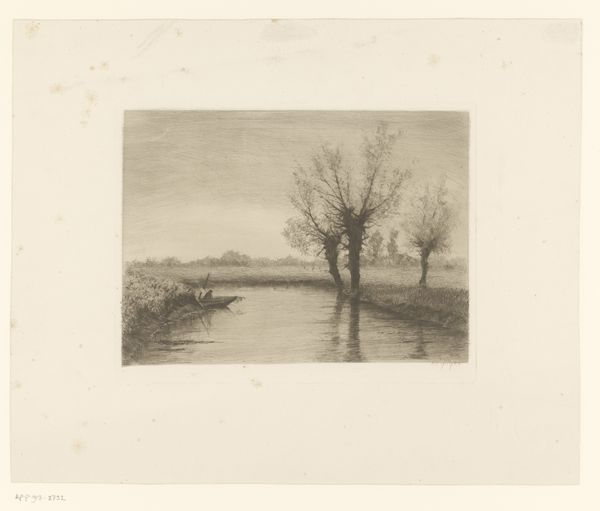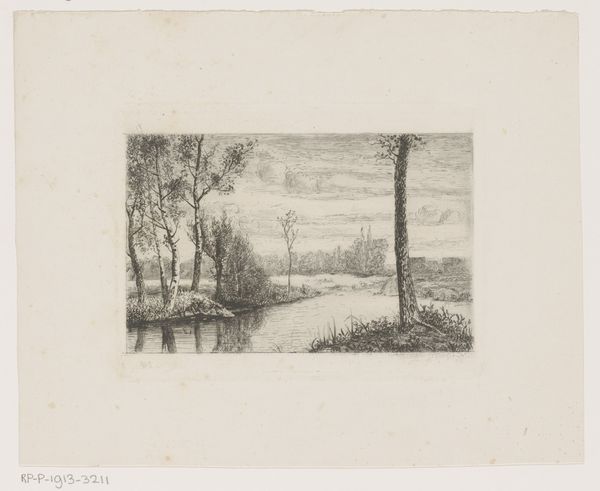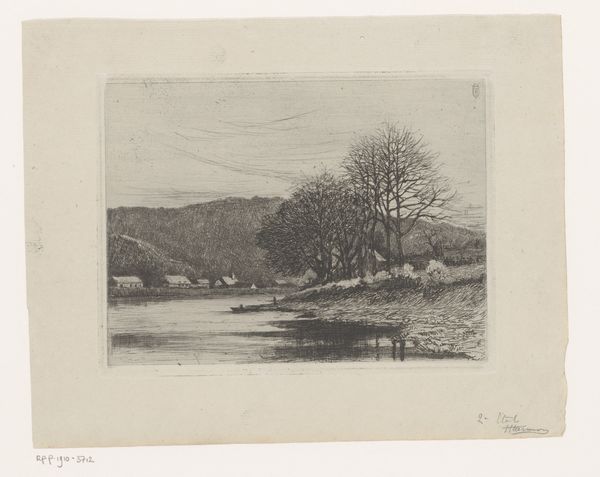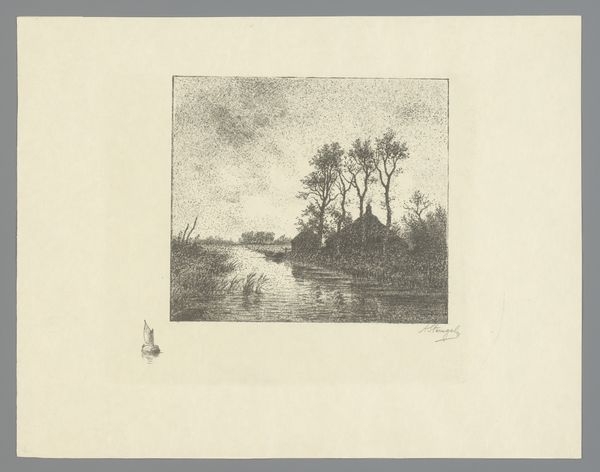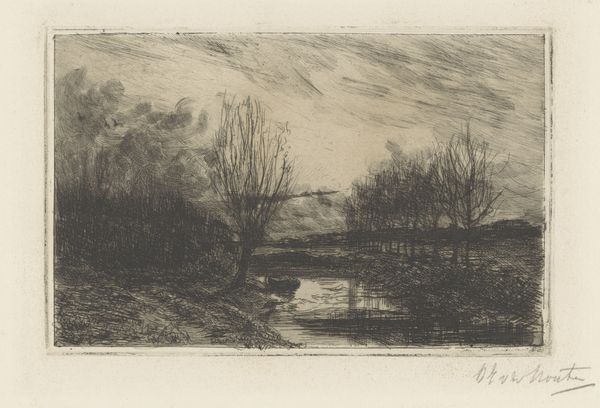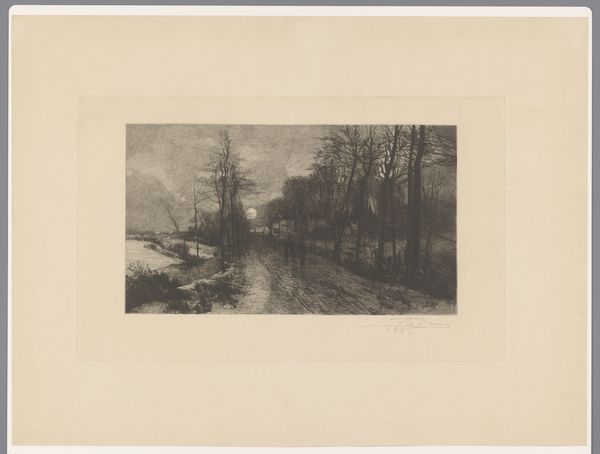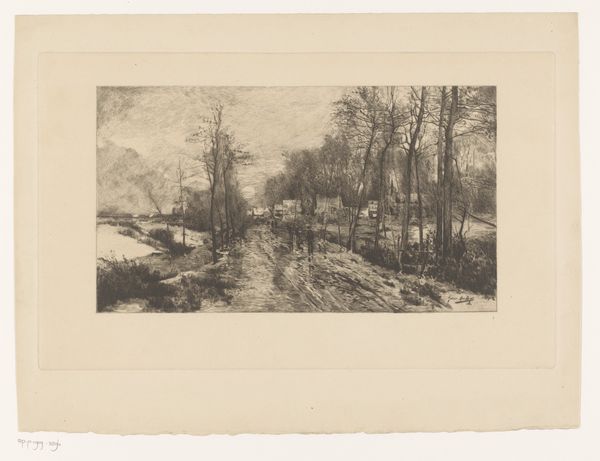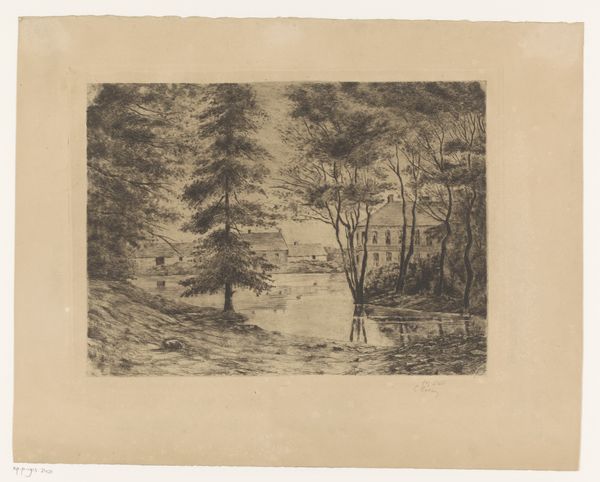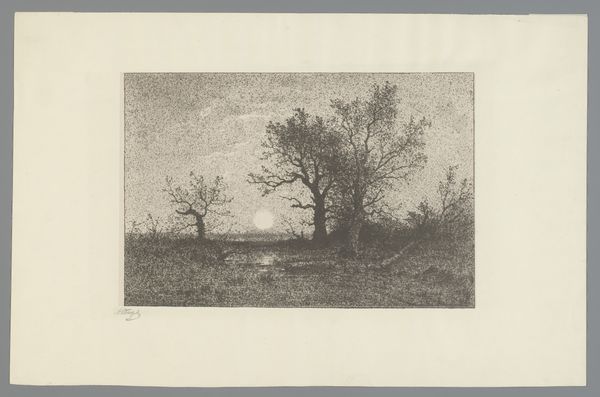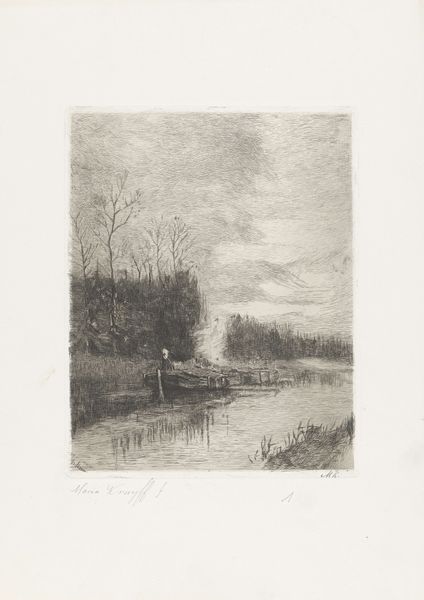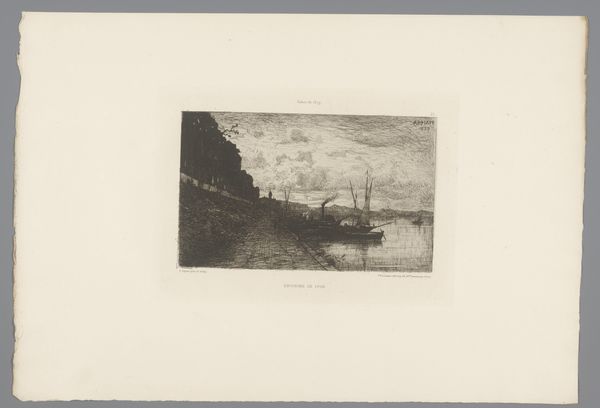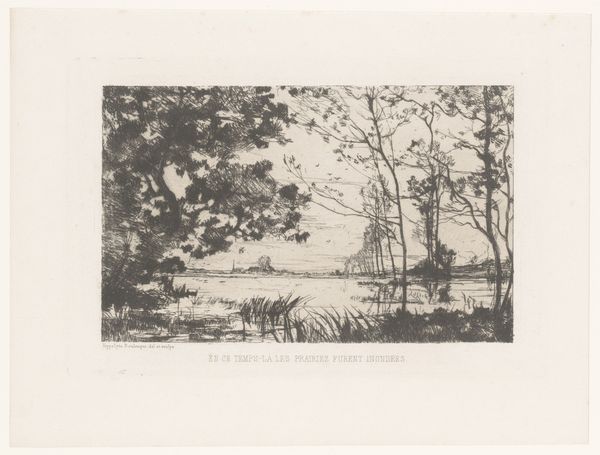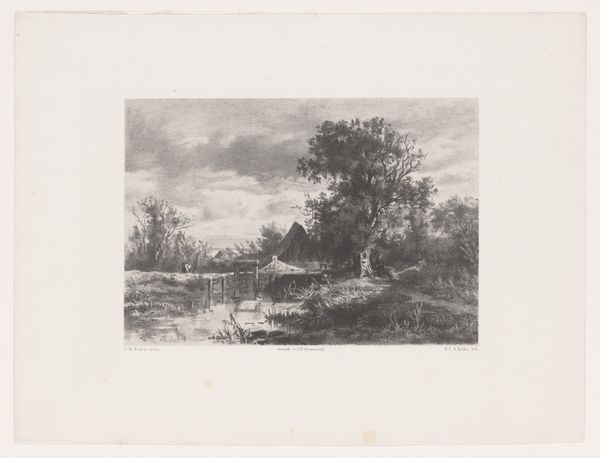
print, etching
# print
#
etching
#
landscape
#
realism
Dimensions: height 191 mm, width 278 mm
Copyright: Rijks Museum: Open Domain
Curator: It possesses such a serene stillness, doesn't it? Almost melancholic. Editor: Absolutely. We are looking at "Landschap met bomen langs water," or "Landscape with Trees Along Water," an etching completed in 1881 by John Postle Heseltine. Its monochromatic palette definitely contributes to that feeling. Curator: Yes, the single color gives it an understated gravity, wouldn’t you say? And it evokes that persistent yearning for pastoral tranquility that artists like Heseltine so often capture. Editor: That pull toward simpler landscapes coincides, of course, with the rapid industrialization occurring at this time. This etching offers us a glimpse into a yearning for an idealized rural past. Were there particular movements shaping Heseltine's artistic approach, in terms of his choice of landscape as a subject? Curator: I suspect, the imagery is deeply rooted in cultural memory of Romanticism, but distilled, more immediate. Look at the deliberate detail in the foreground foliage reflecting onto the water, compared to the distant scene, a subtle commentary, perhaps on perception versus memory? Editor: It also feels subtly subversive, pushing against the grand historical narratives often preferred at that time. This piece suggests value in finding beauty in a localized, naturalistic view. How might audiences have perceived the message of these understated, tranquil compositions during such an era of progress-driven narratives? Curator: A retreat, I think. Escapism. Landscapes like these tapped into the collective desire for solace amidst societal flux. But also perhaps an assertion of something deeper than surface changes - the enduring presence of nature. Editor: I agree. And perhaps, a quiet rebellion—emphasizing lived experiences over manufactured realities. Seeing "Landscape with Trees Along Water" through this lens makes it an intimate social document, subtly registering an evolving society and value system. Curator: Indeed, and it’s this tension – the delicate rendering against a backdrop of monumental shifts – that elevates the work beyond mere visual appeal to a symbolic space, reflecting human adaptation and endurance. Editor: Thank you, it is really fascinating to consider how what appears simple reflects wider social ideas.
Comments
No comments
Be the first to comment and join the conversation on the ultimate creative platform.
